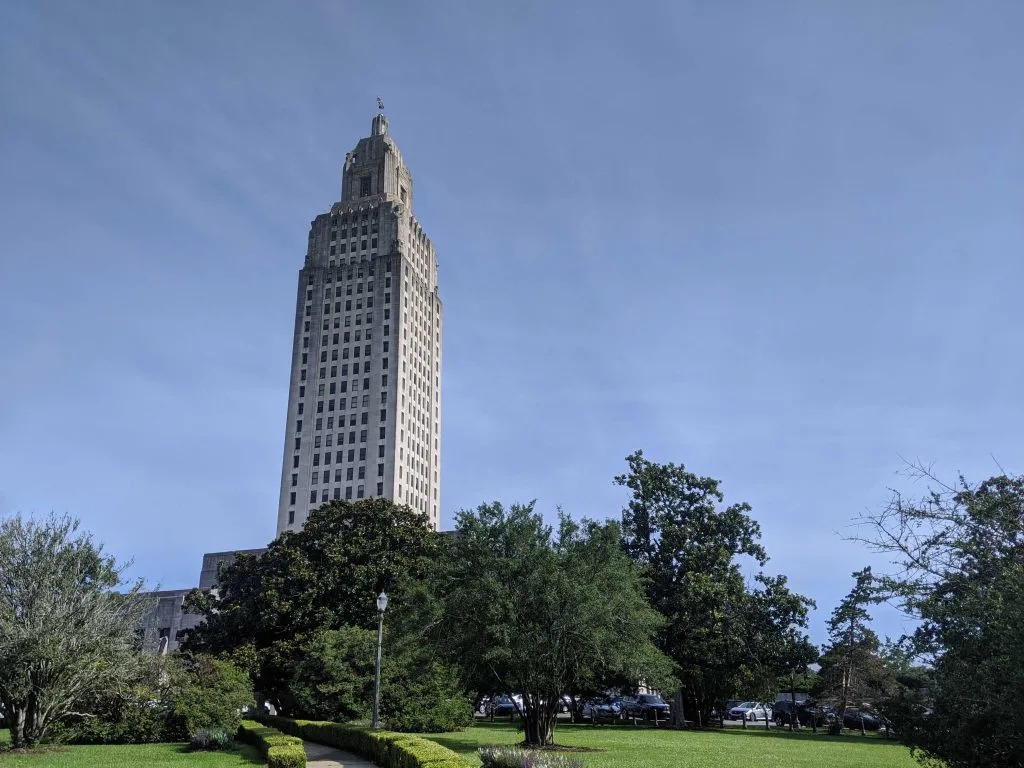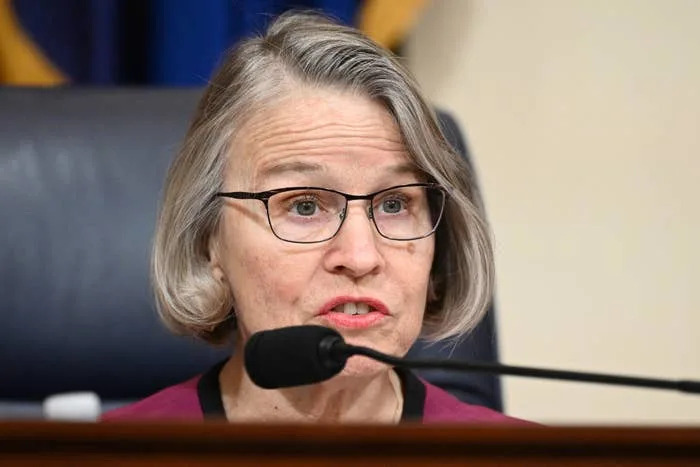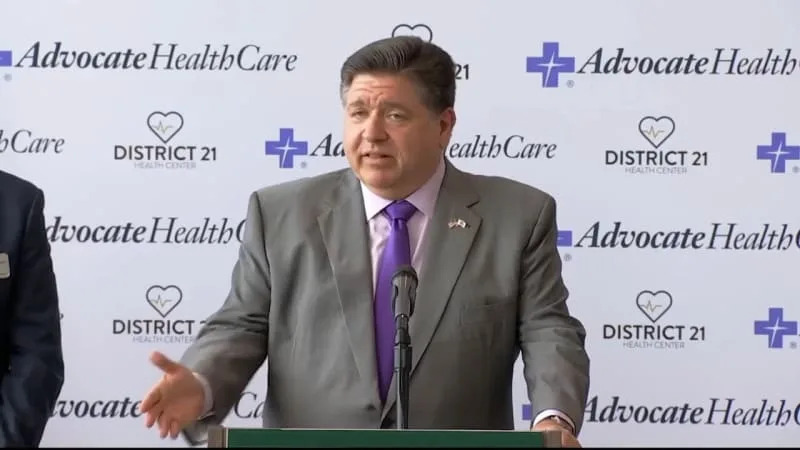
North Dakota Pipeline Authority Executive Director Justin Kringstad listens to a presentation during a July 30, 2025, North Dakota Industrial Commission meeting. (Photo by Mary Steurer/North Dakota Monitor)
Two pipeline companies are competing for a financial guarantee of up to $500 million from the North Dakota government to bring natural gas to the eastern half of the state.
The North Dakota Industrial Commission is expected to decide on Thursday which project to back.
The state wants more pipeline capacity to help oil and gas operators in the Bakken reach customers in the east, said North Dakota Pipeline Authority Executive Director Justin Kringstad. Right now, eastern North Dakota gets its natural gas from one source — the Viking Gas Transmission pipeline, which brings gas down from Canada.
A pipeline connecting the area to the west would support economic development as well as make the power supply in the east more secure, Kringstad said.
“There’s long been a risk in having a single source of supply,” he said.
A west-to-east natural gas pipeline also would benefit Bakken oil producers. As Bakken wells age, they produce a higher percentage of natural gas. Inadequate natural gas pipeline capacity could cause producers to cut back on oil production — which would reduce state oil tax revenue.
The state has had a program to encourage businesses to increase natural gas pipeline capacity since 2007, but it went unfunded for years. The Legislature in 2023 made $30 million per year in financing available. The 2025 Legislature then voted to increase this amount to $50 million per year. The state’s support was essential to get companies interested in the project, Kringstad said.
WBI Energy and Intensity Infrastructure Partners put their hats in the ring for the contract. Representatives from both companies pitched their vision for the pipeline project in July presentations to the Industrial Commission, which consists of the governor, attorney general and agriculture commissioner.

WBI Energy proposes building the first phase of the new pipeline from McKenzie County to Washburn, and the second phase from Washburn to Mapleton, just west of Fargo. The company would also build out an extension from Jamestown to Ellendale, home to a data center. WBI’s timeline is to have phase one in service in November 2029, and phase two in service in November of 2030.
WBI’s project, known as Bakken East, is expected to transport about 1 billion cubic feet of natural gas per day to eastern North Dakota, Kringstad said, noting the initial designs could change as the project progresses. North Dakota produces more than 3 billion cubic feet of natural gas per day.
WBI’s pipeline would be built entirely in North Dakota but would be considered an interstate pipeline because it connects with other pipelines that leave the state. That means it would be permitted by the Federal Energy Regulatory Commission, not the North Dakota Public Service Commission.
Intensity Infrastructure Partners pitched a pipeline that would first extend from Watford City to Underwood in phase one, and then connect Underwood to Casselton in phase two. Intensity said it would aim to finish the first leg of the project by July 1, 2029, and the second phase by Jan. 1, 2030. The capacity to central North Dakota would be about 1.1 billion cubic feet per day of natural gas. The capacity to eastern North Dakota would be about 430 million cubic feet of natural gas per day, expandable to 875 million cubic feet, Kringstad said.
However, Intensity officials told the Industrial Commission the second phase of the project is not yet firm. Intensity is seeking up to $50 million per day from the state for phase one of the project, or $30 million per year for a smaller version of phase one.
The Intensity project would be considered an intrastate pipeline, which means it would be regulated by the North Dakota Public Service Commission. It also would require some certificates from FERC for connections with other interstate pipelines. Intensity has a partnership with Rainbow Energy, which operates Coal Creek Station at Underwood.
Gov. Kelly Armstrong, who chairs the Industrial Commission, indicated in July that the board would select a winner during its August meeting.
“We have tough decisions to make, but it’s a whole lot better than not having any decision,” Armstrong said.
After a project is selected, the state would negotiate specific terms with the company, Kringstad said.
North Dakota is purchasing capacity on the pipeline as a financial backstop. However, the state plans to release its pipeline capacity to private businesses. WBI Energy said in its application that it’s confident a customer will want to acquire the state’s capacity. Kringstad said there are already companies expressing interest.
If the state can’t release its capacity, another option would be for the North Dakota Pipeline Authority to work with a gas marketing firm to try to recoup the state’s investment, Kringstad said.
In a worst-case scenario, the state would provide up to $500 million, or $50 million a year for 10 years, and not be able to recoup its investment. The funding would come through a loan from the Bank of North Dakota, to be repaid with state dollars from the Strategic Investment and Improvements Fund.
“The No. 1 goal of the program is to release that capacity back to the private sector as quickly as possible,” Kringstad said.
North Dakota Monitor reporter Mary Steurer can be reached at [email protected]. Editor Amy Dalrymple can be reached at [email protected].
SUPPORT: YOU MAKE OUR WORK POSSIBLE
SUBSCRIBE: GET THE MORNING HEADLINES DELIVERED TO YOUR INBOX








Comments